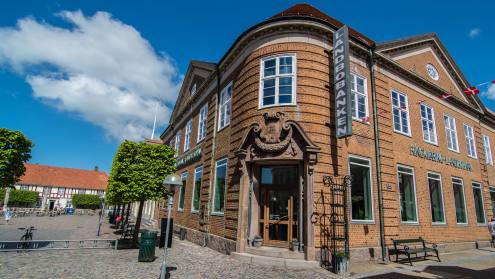
Analysts are cautious about Spain’s domestic banks. Many of them believe that the effects of the credit crisis on balance sheets have still not been completely resolved; they worry about where future growth and profits will come from in a low-interest-rate environment and they also have concerns about the Spanish political situation.
Left-leaning parties are gaining support and there are fears that December’s elections could usher in a new coalition that could reverse some of the country’s pro-growth reforms.
A robust plan
But CaixaBank’s CEO, Gonzalo Gortázar, is confident that the bank’s strategy of being a technological leader, together with a focus on cost reduction, organic growth and high coverage of non-performing loans (NPLs), will prove the right formula for dealing with any headwinds.
“The market tone is generally more pessimistic across the board, but the fundamentals in Spain have not changed negatively. The economy is doing very well, unemployment is coming down and the trends in terms of reduction of cost of risk are positive. There are challenges but I feel quite confident,” he says. “Our cost of risk was 100 basis points [bps] last year, it’s 80bps this year and we are moving towards less than 50bps. Normalising the cost of risk will provide a significant boost to our earnings.
“We have managed to keep our costs flat while keeping revenues growing. The core story is full recovery ahead in the traditional banking business. There have been seven quarters of improvement in gross domestic product and I don’t see it being derailed – it can be faster or slower depending on circumstances.
“We expect to deliver, in time, a 12% to 14% return on tangible equity. This is a change from 3.4% last year and now we are about 5%, so clearly we are moving in the right direction. There are always uncertainties – political uncertainties and market uncertainties – but we feel we have the strategy to deal with them.”
CaixaBank is now the largest bank in Spain, with nearly 14 million customers, 5345 branches, a 16.5% share of lending, 15.1% share of deposits and 21.6% in insurance and savings products. In the first half of 2015, pre-tax income was up 25% on the equivalent period in 2014, at €557m.
The bank came through the crisis in better shape than many of its competitors and has managed to consolidate its position by acquiring Banco de Valencia and Banca Civica in 2012. In early 2015, it bought the Spanish operations of Barclays for €800m.
Mr Gortázar says that the merger has been carried out in record time, with Barclays integrated onto the Caixa core banking system in four-and-a-half months, costs cut in half and staff reduced by half with an incentivised redundancy programme. The rebranding of Barclays 261 branches was completed in May. “We didn’t waste a second with this integration,” says Mr Gortázar.
Challenging the market
But will Caixa’s efforts make it stand out in Spain, where a mood of pessimism still prevails? A Bank of America Merrill Lynch (BAML) report says: “The legacy of the credit crisis still looms large for the Spanish domestic banks. Deleveraging and a lack of support from interest rates, together with the income lost from bond portfolios, weighs heavily on net interest income prospects for all banks.”
“There are also downside risks to the Spanish economic recovery stemming from renewed political uncertainty… this is a particular issue for an economy that is still very dependent on external funding.”
But while negative on the sector, the BAML analysts are more positive on Caixa’s prospects, predicting the return on net asset value will reach 13% to 14% by 2017-18, up from 3% last year.
A report by Berenberg says: “Key to our negative view on Spanish banks, and European banks more broadly, is our belief that excessive debt levels will dampen demand and limit the sustainability of any recovery. This will keep interest rates at the zero bound, suppress loan growth and depress asset quality and encourage further regulatory tightening.”
Berenberg also points to an issue with Spanish mortgages and a 2013 legal case in which the Spanish Supreme Court ruled that interest rate floors in BBVA, Caixa Galicia and Caixa Mar mortgages should be cancelled as the product had been mis-sold. A large number of Spanish mortgages contain both interest rate caps and floors, but with rates heading downwards, banks have gained from the floors, which has created public anger. A forthcoming ruling in a case between banks and the Spanish Banking and Insurance Consumer Association could be instrumental in ending floors across the sector.
Mr Gortázar says that CaixaBank did not use floors in its own mortgages and only has them in its portfolio due to acquisitions. “What we have been doing in the past two years is reviewing case by case and making sure that whenever there was doubt about the way the floor was commercialised, we would remove it. In some cases the floor and the cap were not proportionate. In addition, in line with our strong social values, we have removed the floor altogether for the most vulnerable clients, such as the unemployed or those with low incomes.”
In terms of asset quality, Caixa's NPLs peaked in mid-2013 and are now down to 9% with a 55% coverage ratio. Mr Gortázar points out that one third of NPLs are actually performing but are classified this way under Spanish rules because they have been restructured.
Selling off overseas
At the same time as CaixaBank has been buying domestic banking assets, it has been selling down some of its overseas investments. The bank has holdings in Bank of East Asia, BPI, Erste and GF Inbursa as well as in Spanish companies Repsol and Telefónica. At one time they accounted for 24% of the bank’s core capital.
Mr Gortázar says: “The plan is to reduce the weight of these investments that currently account for 16% of core capital to less than 10% by the end of next year. We are not reducing these investments for capital reasons but because they are not our core banking business in Spain. We want to be invested in our core business, which we want to grow. If you have too many other investments, the picture gets a bit blurred and the earnings can be volatile. Reducing the exposure to sectors outside of our core business would further reduce the potential for earnings volatility.”
A technological advantage
In pursuit of bolstering the core business, Caixa has developed as a leader in the use of new technology and has used this to cut costs and free up staff time for dealing with clients. The cost-to-income ratio has fallen from 56% in 2014 to 52% in June, with a target of being below 45% by 2018.
“We have an obsession with industrial efficiency and we have centralised back-office functions relentlessly,” says Mr Gortázar. “We have kept our people in headquarters down to a minimum and the proportion of people in headquarters is now down to 6%. In other banks it can be as high as 25% or even 40%.
“Technology is one of our competitive advantages and is a big a differentiator in the market. It’s a must-have, it’s not a nice-to-have. We have continued to invest in technology as part of our efficiency drive. As a result, large numbers of transactions are done by customers in branches using ATMs, leaving staff free to give advice and sell products.
"What you want to make sure is that the branches are not processing centres for transactions but a point of sale and a point of advice. Technology is not only about cost savings but also about commercial gains.”
CaixaBank now has 10,000 banking employees equipped with computer tablets who can open an account and do other banking transactions at a client’s office or home, and they spend the majority of their time visiting clients. It is initiatives such as this – where an innovative use of technology mixes with the human touch – that show why Caixa continues to rise above the financial stagnation in Spain that is affecting so many of its rivals.











